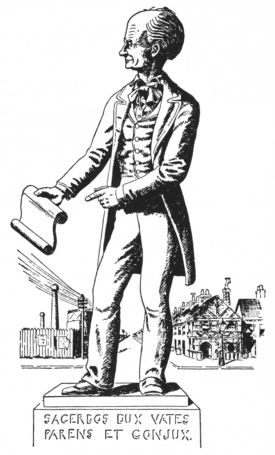
|
Excerpts fromLifemanshipStephen Potter |
MIXED FOURSOMES
In a mixed foursome it is important in the basic foursome play (i.e. winning the admiration of your opponent’s female partner) that your own drive should be longer than that of the opposing man who will, of course, be playing off the same tee as yourself.
Should he possess definite superiority in length, you must either (a) be ‘dead off my drive, for some reason’ all day – a difficult position to maintain throughout eighteen holes; (b) ‘I’m going to stick to my spoon off the tee,’ and drive with a Fortescue’s Special Number 3 – an ordinary driver disguised to look like a spoon, and named ‘spoon’ in large letters on the surface of the head; (c) use the Frith-Morteroy counter.
The general play in mixed foursomes, however, differs widely from the Primary Gambits of a men’s four. But beginners often feel the lack of a cut-and-dried guide.
In the all-male game, of course, when A and B are playing against C and D, the usual thing, if all is going well, is for A and B to be on delightfully good terms with each other, a model of easy friendship and understanding. Split Play is only brought into play by the A-B partnership if C-D look like becoming 2 up. A then makes great friends with C, and is quietly sympathetic when D, C’s partner, makes the suspicion of an error, until C is not very unwillingly brought to believe that he is carrying the whole burden. His dislike for D begins to show plainly. D should soon begin to play really badly.
In the mixed game, all is different. Woo the opposing girl is the rule. To an experienced mixed-man like Du Carte, the match is a microcosm of the whole panorama of lovers’ advances.
He will start by a series of tiny services, microscopic considerations. The wooden tee picked up, her club admired, the ‘Is that chatter bothering you?’ The whole thing done with suggestions, just discernible, that her own partner is a little insensitive to these courtlinesses, and that if only he were her partner, what a match they’d make of it.
Du Carte, meanwhile, would be annoying the opposing man, by saying that ‘Golf is only an excuse for getting out into the country. The average male is shy of talking about his love for birds and flowers. But isn’t that... after all–’
Du Carte was so loathsome to his male friends at such moments that they became over-anxious to win the match. Whereas the female opponent, on the contrary, was beginning to feel that golf was not perhaps so important as sympathetic understanding.
By the twelfth hole Du Carte was able to suggest, across the distance of the putting green, that he was fast falling in love. And by the crucial sixteenth, Female Opponent would have been made to feel not only that Du Carte had offered a proposal of marriage, but that she, shyly and regretfully, had refused him.
Du Carte invariably won these matches two and one. For he knew the First Law of Mixed Gamesmanship: that No woman can refuse a man’s offer of marriage and beat him in matchplay at the same time.
Stephen Potter, Lifemanship, 1950